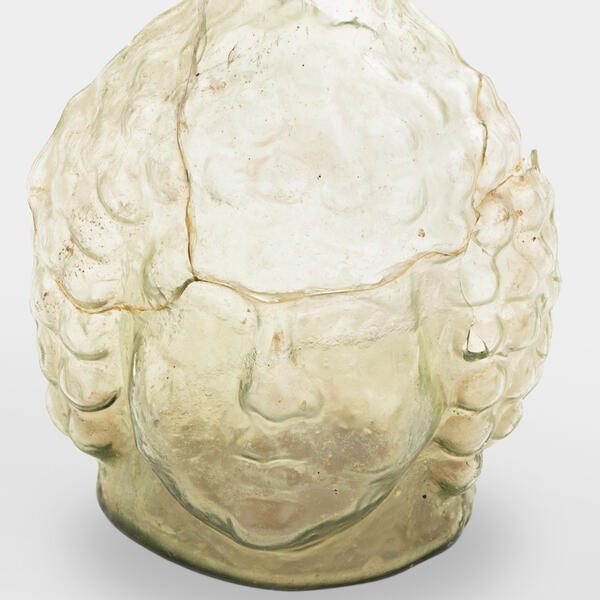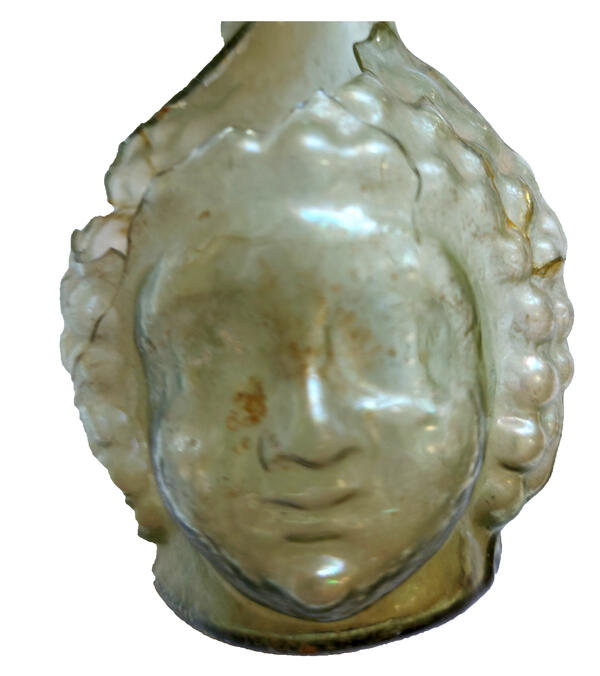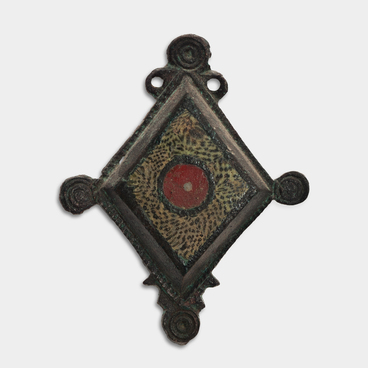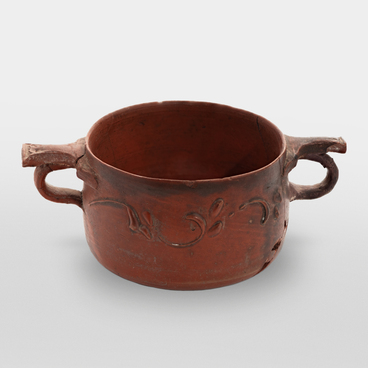The exhibition of the Tanais Archaeological Museum-Reserve features a glass balsamarium — one of the most significant artifacts associated with the material culture of the early centuries of the common era.
A balsamarium is a glass vessel used to store perfumed oils. It started replacing clay vessels as early as the 1st century CE. It was better than a clay container at preserving expensive essential oils. Because of that, thousands balsamarii were produced. Over time, these vessels began to be used not only in everyday life but also in funerary rituals. Given these circumstances, the balsamarium is among the most commonly found vessels available for archaeological study.
The Tanais balsamarium is an incense vessel. It was made in the second half of the 2nd century CE or the first half of the 3rd century CE. It features a two-sided, asymmetrical image of two faces of young men with plump cheeks, and protruding, rounded chins. Each face is surrounded by three rows of curls, depicted using rounded cones. The curls descend to the neck which is at the bottom of the bottle. The vessel is made of transparent, light yellowish-green glass with numerous bubbles. It is believed that this balsamarium depicts Dionysus, the Greek god of viticulture and winemaking.
Dionysus is a unique and mysterious figure in Greek mythology, associated with wine, fun, theater, and fertility. He was often depicted with vines and ivy and represented by theater masks. He was mentioned frequently in the works of ancient Greek poets from the 9th and 8th centuries BCE. The most famous literary work dedicated to Dionysus is Hesiod’s account of his life which is considered to be his biography. Dionysus was the last immortal on Olympus. Given that he was half-divine and half-mortal, it is no surprise that he was closely connected to humans and their concerns about growing grapes and gathering the harvest.



